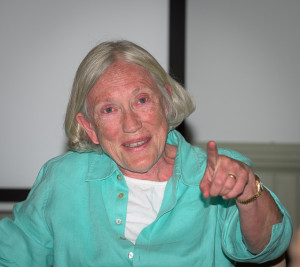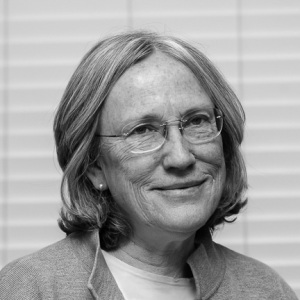Story has served on the Scientific Advisory Board of the Allen Institute for several years. The importance of that work was underscored recently by a landmark paper, Survey of spiking in the mouse visual system reveals functional hierarchy, Nature 592: 86-92, 2021. In that work, scientists at the Allen Institute of Brain Science reported on physiological recording of more than 100,000 units in six brain regions, and variations with changes in visual stimuli. The paper illustrates the power of a systematic approach to brain structure and function, devised so that the results are of immediate use to the larger scientific community.
Category Archives: Design and Review of Programs
Thomas Sargent Reese and NIH intramural science
In July, 2015, Story participated in a celebration of the life and scientific contributions of Thomas Reese, who has been in the intramural program at NINDS for many years. During much of that tenure, Tom worked with collaborators and students at the Marine Biological Laboratories at Woods Hole, Massachusetts.
Story pointed out that his successes were a vindication of the design of intramural research programs. He had undertaken projects with an uncertain future, had devised and exploited novel techniques, and had worked with collaborators across a broad range of disciplines. By supporting his roles in the Neurobiology course at Woods Hole, the NIH intramural program also achieved a remarkably important addition to the training of many talented young investigators.
Brains behind BRAIN
The BRAIN (Brain research through advancing innovative technologies) initiative is a multifaceted, ambitious program launched by President Obama in April, 2013. At least five federal entities are involved, coordinated and spearheaded by the National Institutes of Health (NIH). Within the NIH, ten Institutes are actively involved. This is an enormous array of talent and resources, but it also presents a challenge for achieving optimal coordination and interaction. The NIH created a “council of councils” –the BRAIN Multi-Council Working Group–to inform and involve the ten participating institutes. Each institute has asked a member of its own Advisory Council to join this “council of councils”, and in addition there are five at-large members. Dr. Story Landis serves as one of these at-large members. Her experience as Director of NINDS, especially her roles in the NIH Blueprint for Neuroscience Research, has made her an invaluable member of the Working Group.
Review and advice where it really matters
Over the last four decades, the Howard Hughes Medical Institute (HHMI) has had an extremely significant and positive impact on the conduct of biomedical research. Central to the Institute’s strategies has been the HHMI Investigator Program, which now supports more than 300 scientists and their teams in more than 70 institutions. HHMI has learned to identify gifted and productive scientists, and then provides them with the resources needed to succeed in their areas of investigation. Dr. Story Landis recently joined the Scientific Review Board, and participates in the review of Investigators and their teams. This responsibility requires the capacity to assess individuals and programs, and insight into genuinely important scientific advance.
Strategies for Growth in Institutions
Academic institutions vary widely in size, organizational structure, and aspirations. The Oregon Health Sciences University is a rich mix of clinical care, clinical research, and basic neuroscience research. Dr. Story Landis visited January 12, 2015, to participate in an external review and to make recommendations for strategies and planning. Such a review requires the capacity to gauge strengths and weaknesses in individuals, and to understand interactions within a complex organization that will foster continued growth.
Institutional Planning for Neuroscience Research
The University of Iowa is planning the organization of its neuroscience research efforts in methodical, thoughtful fashion. Dr. Story Landis joined four colleagues in January, 2015, to work with leadership at the University of Iowa, and to identify strategies that would take advantage of their strengths, and foster the development of new programs. Discussions benefited from the perspectives of junior and senior faculty, and senior administration. Dr. Landis could contribute to these analyses from her personal experience in founding the Department of Neuroscience at Case Western Reserve University, and her broader view of neuroscience research across the nation as seen from the National Institute of Neurological Disorders and Stroke. There is no simple template. Review and planning are influenced by people, resources, institutional culture, and aspirations. The University of Iowa now has a better sense for how its programs are viewed from the outside, how efforts elsewhere may inform their planning, and ways in which they may engage with neuroscience research across the nation.
Allen Institute for Brain Science
Story Landis has joined the Scientific Advisory Board of the Allen Institute for Brain Science. This extraordinary endeavor carries out discovery science, and assembles information essential to a host of other investigators. All the data and tools of this remarkable effort are freely available, and the design of the investigations fosters multidisciplinary, team science.
Scientific Review of NYSTEM
New York Stem Cell Science works collaboratively with the Empire State Stem Cell Science Board to implement support of stem cell science in New York. Their goal is “to make grants to basic, applied, translational or other research and development activities that will advance scientific discoveries in fields related to stem cell biology.” This innovative and energetic program has made major contributions toward stem cell biology discovery, implementation of new knowledge, and training of new investigators. Story Landis is now participating in the Scientific Review function, to assure continued growth and success of the program.


